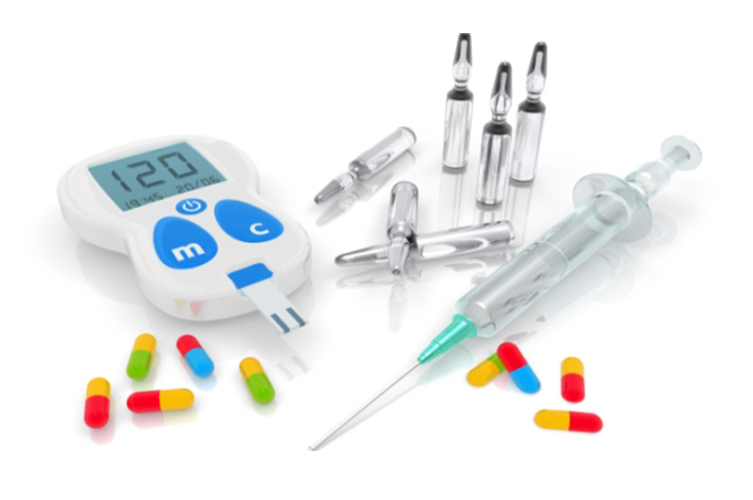diabetes tests
8 Essential Winter Tips for Diabetics - Stay Healthy
Winter has almost arrived in most parts of the country. With the changing season, everyone needs a little more care, a little more attention. If you or a loved one has diabetes, this becomes all the more important since diabetes is a chronic health condition that needs constant support and efforts in every season. Winter and diabetes As per a study, most people with diabetes could have higher HbA1c levels in winter as compared to the summer. This occurs because the body tends to release more glucose to keep itself warm in winter; but for this ends up being more harmful than helpful for those having diabetes. Here are 8 practical tips diabetics must know for a healthy winter: 1. Eat healthy without going overboard Cold weather in winter may make you prone to comfort eating. Remember, the basics of mindful eating do not change with the changing weather. Avoid processed and deep fried food items. If you face craving for some hot ghee parathas with butter, opt for cooking that at home. This helps avoid unhealthy, refined oil in the outside food. 2. Store your insulin and diabetes devices out of the cold Similar to extreme heat, extreme cold may also affect your insulin and diabetes devices such as insulin pens, pumps, and glucometers. Avoid exposing your insulin solutions to temperature below 34 degrees Fahrenheit. Freezing temperatures can cause insulin to break down and lose its effectiveness. Your glucometer working might also be affected. Ensure it is protected in a safe case. 3. Don’t skip your health tests and expert consultations As mentioned earlier, the season changes need you to monitor your blood sugar closely. If you experience any worsening of symptoms or a new symptom appears, consult with your healthcare team. You might need adjustments in your medicines and diet to help keep your sugar numbers within the desired range. Check out our Diabetes monitoring profiles. 4. Keep an eye on your skin, especially feet Dry air in the winter can cause your skin to lose moisture and crack. A cracked skin is more prone to wounds and infections. Take extra care of your feet. Keep checking the area in between the fingers. If you notice any injury or infection that isn’t healing or taking too long to heal, talk to a diabetes expert immediately. 5. Boost immunity to stay safe from infections Health issues like flu, bronchitis, sore throat, etc, are quite commonly encountered in winter, and can cause diabetics to get complications or a more severe disease. Get your flu vaccination done to help keep yourself safe against the flu. Wash your hands often with soap and water, or keep hand sanitizer handy while going out. If you do get sick, follow sick day rules provided by your doctor. Sick days can cause stress and result in blood sugar fluctuations. Amid COVID-19 pandemic, it is important to not ignore any kind of fever. As per experts, people with diabetes have an increased risk of getting a severe COVID-19 illness. Ensure to get tested well in time to seek early care. Work on your body’s natural defense system as well. Include herbal teas and sugar free chyawanprash in your daily diet to boost immunity. 6. Keep your hands warm Cold weather can leave you with cold hands, making testing your blood glucose more difficult. It gets a bit difficult to bring blood drop while pricking. Wearing hand gloves is one of the easiest ways to keep your hands warm. If your hands are cold before testing, warm them up on a warm mug or with warm soapy water. 7. Keep yourself physically active Getting out of the cozy blanket for exercising might not appear as a good idea. However, keeping active helps increase blood circulation and makes you feel warmer. Don’t skip your exercise routine. Continue to keep yourself moving during the winter season to help keep your blood sugar levels under control. You can even choose to work out at home. Feeling fatigued to work out? Check your health within the comfort of your home. 8. Use hot water bags correctly Avoid keeping hot water bags in direct contact with bare skin. Your skin sensitivity may be impaired in people with diabetes due to diabetic neuropathy. Keep a barrier, such as a hand towel or a folded cotton dupatta, between the skin and the water bag. Takeaway You can enjoy this cold weather in the best of your health by simply following these winter health hacks. Ensure to go out only when necessary. Stay at home. Stay safe. And, learn to keep your diabetes in check.
10 Important Tests for Diabetes
On the off chance that you encounter symptoms of increased thirst, frequent urination, unexplained weight reduction, increased appetite, and feel a tingling sensation in your hands or feet, chances are that you are a diabetic. Find out by the following diabetes tests. The Symptoms and effects of diabetes show up all of a sudden and are frequently the explanation behind checking glucose levels. Since the symptoms of diabetes and prediabetes appear more gradually, the side effects may not be clear to us. However, The American Diabetes Association (ADA) has prescribed some particular screening rules for the accompanying individuals: Individuals aged 45 and above are encouraged to get a blood sugar screening, and if results are normal, he is to be screened in every 3 years. Any individual with a body mass index higher than 25, paying little respect to age, pertaining to extra risk components like, hypertension, an inactive way of life, someone who has been diagnosed with PCOS, having delivered an infant who measured more than 9 pounds, a crisp background marked by diabetes in pregnancy, extremely high cholesterol levels, a past filled with coronary illness, and having a relative with diabetes. All top test for diabetes mentioned here. Top Tests for Diabetes HbA1C: This blood test shows your normal glucose level for as long as a few months. It quantifies the rate of glucose connected to haemoglobin and the protein that carries oxygen in red blood cells. The higher the glucose levels, the more haemoglobin one has with sugar attached to it. An A1C level of 6.5 percent or higher on two separate tests shows that you have diabetes. An A1C somewhere around 5.7 and 6.4 percent demonstrates prediabetes. Beneath 5.7 is viewed as normal. Fasting Blood Sugar Test: In this test your blood sample will be collected after you have observed an overnight fast. A fasting blood sugar level less than 100 mg/dL (5.6 mmol/L) is normal. A fasting blood sugar level from 100 to 125 mg/dL (5.6 to 6.9 mmol/L) is considered prediabetes. If it’s 126 mg/dL (7 mmol/L) or higher on two separate tests, you have diabetes. A Complete Blood Count (CBC): This is a blood test used to evaluate an individual’s overall health and discover a wide range of disorders, ranging from anemia, to leukemia. The CBC test measures several components and features of one’s blood, that typically includes Oxygen carrying Red blood cells, White blood cells, Hemoglobin, the protein in red blood cells that carries oxygen, Hematocrit, the proportion of plasma in an individual’s blood and Platelets, that help with clotting blood. Any abnormal increases or decreases in these cell counts as revealed in a CBC test may indicate that one might have an underlying medical condition that requires to be diagnosed further. Post Prandial Glucose Test (PPBS): This is a blood glucose test that decides the measure of a particular type of sugar, named as glucose. In this test Glucose is measured in the blood particularly after a meal. Ordinarily, blood glucose levels elevate marginally after eating a meal. This expansion causes the pancreas to discharge insulin, which helps the body in expelling glucose from the blood and storing it for providing vital energy to the body. Individuals with diabetes may not create or react legitimately to insulin, which increases their blood glucose levels. High blood glucose levels can drastically harm the eyes, kidneys, nerves, and veins. A 2-hour PPBS test measures blood glucose precisely 2 hours in the wake of eating a meal. By this point glucose has generally retreated down in healthy individuals, yet it might in any case be raised in individuals with diabetes. Subsequently, it serves as a trial for whether an individual may have diabetes, or of whether an individual who has diabetes is effectively controlling their blood glucose levels. Cholesterol Test: Diabetes drastically increases the risk of heart disease in an individual, which makes it inevitable for them to have a blood test to screen their cholesterol levels more frequently; in the off chance their cholesterol levels are high. Triglycerides: Triglycerides are a kind of fat that is typically found in the blood. When there is an increase in the levels of triglycerides, it increases the risk of coronary artery disease, especially in women. A person’s triglyceride levels are measured with a blood test along with testing cholesterol levels in the blood. Normal triglycerides are below 150. Levels above 200 are high. Normally a person’s triglyceride level increases due to: Being overweight Lack of Exercise Excessive Smoking Alcohol Genetic disorders Triglyceride levels may be lowered with a combination lifestyle changes like: Losing Weight Healthy Diet Regular Exercise Creatinine Blood Test: A creatinine blood test measures the level of creatinine in the blood. Creatinine is a waste item that structures when creatine separates. Creatine is found in your muscle. Creatinine levels in the blood can provide your specialist with data about how well your kidneys are functioning. Electrolytes: This is a blood test that measures the main electrolytes in the body which includes sodium, potassium, chloride and bicarbonate (CO2)—can be used to evaluate symptoms of heart disease and monitor the effectiveness of treatments for high blood pressure, heart failure and liver and kidney disease. Insulin Auto Antibodies (IAA): This tests detects the antibodies targeting insulin, Along with attacking beta cells, the immune system in people with type 1 diabetes also targets insulin.. C-Peptide: This test measures how much C-peptide is in the blood of an individual. Since levels of this peptide generally match insulin levels in the body, the test is mostly used to indicate how much insulin an individual’s body is producing. Normally Low levels of C-peptide and insulin usually point to type 1 diabetes.
 Home Visit
Home Visit Upload
Upload
















 WhatsApp
WhatsApp